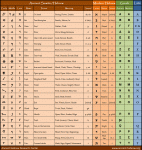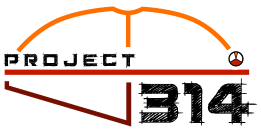Within weeks of the rediscovery of the Exodus Tabernacle, one thing became abundantly clear—that the Tabernacle was a sort of "Rosetta Stone" or key to deciphering a host of Scriptures. This should come as no surprise to the avid Bible reader; after all, the Tabernacle in mentioned in not less than 50 chapters of the Bible. Further study revealed that what is contained in the Tabernacle texts might be studied ad nauseam, or for an entire lifetime, whichever might come first. Furthermore, the need for a wide variety of subject matter experts became quickly apparent, particularly in light of the diversity of the Tabernacle subject matter and revelation.
Although many of the Tabernacle details remain a mystery to many believers and religious academic types alike, it was obvious—given the magnitude and significance of the Round Tabernacle discovery—that Project 314 needed to be founded as an entity without a single termination or conclusion point. Outside help would be essential to unveil the Tabernacle's many hidden mysteries, and that help would need to come in many shapes and sizes... people with different educations, backgrounds, skills, mindsets, and insights. The collection and cataloging of these materials, of course, would then need to be an ongoing process as people awakened to the Round Dwelling place paradigm. To this end, Project 314 was originally initiated as a ".org", and as of recent, this central "articles" hub page was created—to centralize and disseminate a variety of mind-blowing discoveries.
To submit an article for publication, please click the button below and complete the form fields as required. Please note that Project 314 reserves the right to extract or omit information for the sake of brevity and applicability, but will strive to preserve the essence of the content and relevant details to the greatest extent possible. Articles of a more technical nature may require or be considered for additional peer review.
Submit Article

While a number of slightly different approximations of π have been used for practical purposes since ancient times, French mathematician François Viète is typically credited with perfect mathematical approximation of the constant. Like the Greek mathematician Archimedes, Viète understood that a circle’s circumference could be approximated by an infinite number of polygons inscribed inside a circle(1), as illustrated below:


Could the ancient Exodus Tabernacle shed new light on the Ancient Paleo Hebrew Language? See how the ancient pictographic Hebrew Letters, along with the spelling of ancient Hebrew words, further testify to the shape and configuration of the ancient Hebrew tent and dwelling place!
As I reflect back upon my Hebrew journey which began over a decade ago, I recall what a strange and unexpected joy it was to learn the alphabet—or more specifically, the Hebrew “aleph-bet”—from scratch as an adult. While the foreign letters were unfamiliar and thus a little intimidating at first, I found it was pretty easy to learn the names of the twenty-two Hebrew letters—especially if they were put to a simple and catchy “aleph-bet” tune. Likewise, learning the phonics associated with the each of the letters also came pretty easy, as most of the Hebrew letters bear obvious similarities to an English alphabet counterpart. Coupling the sights and sounds of the Hebrew characters together, I had mapped all of them into my mind in just a couple of weeks. In fact, it seemed as if the letters were somehow already familiar—perhaps embedded into the very core of my DNA since my conception.

Could Israel's ancient Tent of Meeting, a.k.a. the "Tabernacle", be more than just a meeting place? What if the so-called "Tent of Meeting" was not only a place where the Hebrews met with El Shaddai, but was also used in a navigation and timekeeping capacity? Is it possible that the Israelites were able to use the remarkable dome structure and circular courtyard as a clock and calendar, being able to determine the exact day of the year, along with what time of day it was within mere minutes? Learn how and why the Tent of Meeting might likewise be referred to as the Tent of Appointed Times, used in conjunction with establishing the Holy Days and Festivals according to the Ancient biblical calendar.

What is “PI”, and what is its significance? PI, designated by the Greek letter π, is a mathematical constant defined as the ratio of a circle’s circumference to its diameter. This Circumference/Diameter ratio used to calculate π is depicted below:
